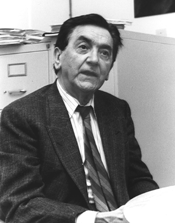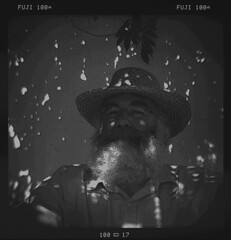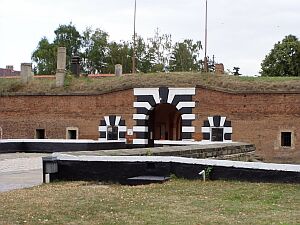The geology of Minnesota is the study of the rock, minerals, and soils of the U.S. state of Minnesota, including their formation, development, distribution, and condition.
The state's geologic history can be divided into three periods. The first period was a lengthy period of geologic instability from the origin of the planet until roughly 1,100 million years ago. During this time, the state's Precambrian bedrock was formed by volcanism and the deposition of sedimentary rock and then modified by processes such as faulting, folding and erosion. In the second period, many layers of sedimentary rock were formed by deposition and lithification of successive layers of sediment from runoff and repeated incursions of the sea. In the third and most recent period, glaciation eroded previous rock formations and deposited deep layers of glacial till over most of the state, and created the beds and valleys of modern lakes and rivers.
Minnesota's geologic resources have been the historical foundation of the state's economy; enormous industries have been built around its extractive geological resources. Precambrian bedrock has been mined for metallic minerals, including iron ore, on which the economy of Northeast Minnesota was built. Archaen granites and gneisses, and later limestones and sandstones, are quarried for structural stone and monuments. Glacial deposits are mined for aggregates, glacial till and lacustrine deposits formed the parent soil for the state's farmlands, and glacial lakes are the backbone of Minnesota's tourist industry. These economic assets have in turn dictated the state's history and settlement patterns, and the trade and supply routes along the waterways, valleys and plains have become the state's transportation corridors.
Geological history
Minnesota contains some of the oldest rocks on Earth, granitic gneisses that formed some 3,600 mya (million years ago) — roughly 80% the age of the planet. The rifting stopped before the land could become two separate continents. About 100 million years later, the last volcano went quiet.
Formation of Precambrian bedrock
The mountain-building and rifting events left areas of high relief above the low basin of the Midcontinent rift. Over the next 1,100 million years, the uplands were worn down and the rift filled with sediments, forming rock ranging in thickness from several hundred meters near Lake Superior to thousands of meters further south. Other land animals followed as the dinosaurs disappeared, but much of the physical evidence from this era has been scraped away or buried by recent glaciation.
The Ice Ages
Contemporary Minnesota is much quieter geologically than in the past. Lava flows are the only remaining traces of the volcanism that ended over 1,100 mya. The state is now roughly 400 miles (600 km) from the seas that once covered it, and the continental glaciers have receded entirely from North America. The state's landscape is a relatively flat peneplain; its highest and lowest points are separated by only 1699 feet of elevation.
While the state no longer has true mountain ranges or oceans, there is a fair amount of regional diversity in landforms and geological history, which in turn has affected Minnesota's settlement patterns, human history, and economic development. These diverse geological regions can be classified several ways. The classification used below principally derives from Sansome's Minnesota Underfoot - A Field Guide to Minnesota's Geology, but is also influenced by Minnesota's Geology by Ojakangas and Matsch. These authorities generally agree on areal borders, but the regions as defined by Ojakangas and Matsch are more geographical in their approximations of areas of similar geology, while Sansome's divisions are more irregular in shape in order to include within a region all areas of similar geology and give particular emphasis to the effects of recent glaciation.
Minnesota today
Northeast Minnesota is an irregularly-shaped region composed of the northeasternmost part of the state north of Lake Superior, the area around Jay Cooke State Park and the Nemadji River basin southwest of Duluth, and much of the area east of U.S. Highway 53 that runs between Duluth and International Falls. Excluded are parts of the beds of glacial lakes Agassiz and Upham, the latter now occupied by the upper valley of the St. Louis River and its tributary the Cloquet.
Known as the Arrowhead for its shape, this region shows the most visible evidence of the state's violent past. There are surface exposures of rocks first formed in volcanic activity some 2,700 mya during construction of the Archaen-Superior province, While high-grade ores have now been exhausted, lower-grade taconite continues to supply a large proportion of the nation's needs.
 Northeast Minnesota: ancient bedrock
Northeast Minnesota: ancient bedrockNorthwest Minnesota is a vast plain in the bed of Glacial Lake Agassiz. This plain extends north and northwest from the Big Stone Moraine, beyond Minnesota's borders into Canada and North Dakota. In the northeast, the Glacial Lake Agassiz plain transitions into the forests of the Arrowhead. The region includes the lowland portions of the Red River watershed and the western half of the Rainy River watershed within the state, at approximately the level of Lake Agassiz' Herman Beach. At marginally higher elevations within these wetlands are areas of black spruce, tamarack, and other water-tolerant species.
Northwest Minnesota: glacial lakebed
Southwest Minnesota is in the watersheds of the Minnesota River, the Missouri River, and the Des Moines River. Due to the quaternary and bedrock geology of the region, as well as the reduced precipitation in the region, groundwater resources are neither plentiful, nor widely distributed, unlike most other areas of the state. Given these constraints, this rural area hosts a vast network of water pipelines which transports groundwater from the few localized areas with productive groundwater wells to much of the region's population.
Southwest Minnesota: glacial river and glacial till
Southeast Minnesota, wholly included in the Driftless Area, is separated from Southwest Minnesota by the Owatonna Moraine, the eastern branch of the Bemis Moraine, a terminal moraine of the Des Moines lobe from the last Wisconsin glaciation.
The bedrock here is lower Paleozoic sedimentary rocks, with limestone and dolomite especially prevalent near the surface. To the east, the area is highly dissected, where local tributaries of the Mississippi have cut deep valleys into the bedrock. It is an area of karst topography, with thin topsoils lying atop porous limestones, leading to formation of caverns and sinkholes. The last glaciation did not cover this region (halting at the Des Moines terminal lobe mentioned above), so there is no glacial drift to form subsoils, giving the region the name of the Driftless area. As the topsoils are shallower and poorer than those to the west, dairy farming rather than cash crops is the principal agricultural activity.
Southeast Minnesota: bluffs, caves and sinkholes
Central Minnesota is composed of (1) the drainage basin of the St. Croix River (2) the basin of the Mississippi River above its confluence with the Minnesota, (3) those parts of the Minnesota and Red River basins on the glacial uplands forming the divides of those two basins with that of the Mississippi, (4) the Owatonna Moraine atop a strip of land running from western Hennepin County south to the Iowa border, and (5) the upper valley of the St. Louis River and the valley of its principal tributary the Cloquet River which once drained to the Mississippi before they were captured by stream piracy and their waters were redirected through the lower St. Louis to Lake Superior.
At the surface, the entire region is "Moraine terrain", with the glacial landforms of moraines, drumlins, eskers, kames, outwash plains and till plains, all relics from recent glaciation. In the multitude of glacier-formed depressions are wetlands and many of the state's "10,000 lakes", which make the area prime vacation territory. The glacial deposits are a source of aggregate, and underneath the glacial till are high-quality granites which are quarried for buildings and monuments.
Central Minnesota: knob and kettle country
The subregion of East Central Minnesota is that part of Central Minnesota near the junction of three of the state's great rivers. Included are Dakota County, eastern Hennepin County, and the region north of the Mississippi but south of an east-west line from Saint Cloud to the St. Croix River on the Wisconsin border. It includes much of the Twin Cities metropolitan area.
East Central Minnesota: bedrock valleys and outwash plain
Sources
Chandler, Val W (2005-08-03). A Geophysical Investigation of the Ely Greenstone Belt in the Soudan Area, 4-5. Open File Report 05-1. Minnesota Geological Survey. Retrieved on 2007-06-30.
Heinselman, Miron (1996). The Boundary Waters Canoe Area Wilderness Ecosystem. Minneapolis: University of Minnesota Press. ISBN 0-8166-2804-1.
Heinselman, Miron L. (Autumn 1963). "Forest Sites, Bog Processes, and Peatland Types in the Glacial Lake Agassiz Region, Minnesota". Ecological Monographs 33 (4): 327-374. Ecological Society of America. DOI:10.2307/1950750. Retrieved on 2007-06-30.
Lusardi, B.A. (1997). Quaternary Glacial Geology. Minnesota at a Glance. Minnesota Geological Survey, University of Minnesota. Retrieved on 2007-06-30.
Morey, G. B. (February 1999). "(Abstract) High-grade iron ore deposits of the Mesabi Range, Minnesota; product of a continental-scale Proterozoic ground-water flow system". Economic Geology and the Bulletin of the Society of Economic Geologists 94 (1): 133-42. Society of Economic Geologists. Retrieved on 2007-06-30.
Nute, Grace Lee (1950). Rainy River Country. Saint Paul: Minnesota Historical Society, 3.
Ojakangas, Richard W. & Charles L Matsch (1982), Minnesota's Geology, Minneapolis: University of Minnesota Press, ISBN 0-8166-0953-5
Sansome, Constance Jefferson (1983), Minnesota Underfoot: A Field Guide to Minnesota's Geology, Stillwater, MN: Voyageur Press, ISBN 0-8965-8036-9
Van Schmus, W. R.; Hinze, W. J. (May 1985). "The Midcontinent Rift System". Annual Review of Earth and Planetary Sciences 13: 348. Annual Reviews. DOI:10.1146/annurev.ea.13.050185.002021. Retrieved on 2007-06-30.
Upham, Warren (1896/2002). "The Glacial Lake Agassiz". Monographs of the United States Geological Survey XXV. United States Geological Survey/University of North Dakota. Retrieved on 2007-06-30.
Waters, Thomas F. (1977), The Streams and Rivers of Minnesota, Minneapolis: University of Minnesota Press, ISBN 0-8166-0821-0
 Mars 3
Mars 3

 Cannon
Cannon Turtle ships today
Turtle ships today Baseball career
Baseball career Boston bound
Boston bound

 Bibliography
Bibliography History
History Notable characteristics
Notable characteristics



 Terezín During World War II
Terezín During World War II History
History Darling Harbour
Darling Harbour Lefthit
Lefthit